Energy Sustainability of a Cluster of Buildings with the Application of Smart Grids and the Decentralization of Renewable Energy Sources
Abstract
:1. Introduction
- (a)
- Reduction of CO2 greenhouse gases by 40%; following the ER summit in December 2020, EU-27 leaders agreed to an (increased) 55% CO2 [3] reduction target by 2030.
- (b)
- Reduction of energy consumption by 27% (Directive 2012/27/EU on energy performance also contains amendments to Directives 2009/125/EC and 2010/30/EU and repeals Directives 2004/8/EC and 2006/32/E) [4].
- (c)
- The share of renewable energy sources should increase by 27% [4].
- A principle of cost optimization (current simulation of complex “energy performance of buildings” (EPB)) in order to shift the national minimum energy performance requirements towards achieving economically feasible NZEB targets.
- The smart city/smart building concept based on the acceptance of a sustainable cluster energy system through decentralization of renewable energy sources (RES) and Smart Grids.
- The basic architecture of a Smart Grid through a block diagram in the BEM structure and subsequent designing of Smart Grid optimization in the NZEB system.
- Internal building intelligence (application of automated building management systems (ABMS); energy savings, reduction of CO2 emissions, comfort).
- External building intelligence (application of ABMS; RES, local distribution network, Smart Grids, energy storage, IoT, backup sources, electromobility, technical equipment and sources of heat, electricity, water, etc.).
- Building architecture, smart building design, and materials.
- 1st area:
- The EPB rating is based on defined energy consumption for heating, space cooling, water heating, ventilation, built-in lighting and other technical building systems. EPB is expressed using a numerical indicator of primary energy consumption in kWh/(m2 and year) and the heat transfer coefficient of individual building structures in [W/(m2.K)]. The EPB rating is based on defined energy consumption for heating, space cooling, water heating, ventilation, built-in lighting and other technical building systems. EPB is expressed using a numerical indicator of primary energy consumption in kWh/(m2 and year) and the heat transfer coefficient of individual building structures in [W/(m2.K)].
- 2nd area:
- 3rd area:
- Design of RES microgrid. A microgrid is a small network of electricity users with a local energy source, which is usually connected to the national central network, but is able to operate independently. RES simulation is applied using the HOMER software (Hybrid Optimization of Multiple Energy Resources).
- 4th area:
- Design of a photovoltaic power plant (PV) using the PV*SOL simulation program. It involves the design of PV panels in a given area, the design of inverters, the determination of the annual electricity consumption distribution of the given buildings and an assessment of the need to install battery storage in the given locality.
- 5th area:
- Monte Carlo simulation. This is a stochastic heuristic class of algorithms for simulating systems using pseudo-random numbers. The simulation results were produced using the Palisade @Risk 7.6 simulation program, which is a Microsoft Excel add-in application. Results such as arithmetic mean, minimums, maximums and percentage quantiles are presented.
- 6th area:
- Within our BEM, we build the infrastructure for electromobility (charging stations in a defined area), install automation and monitoring elements of the distribution network and effectively connect it to the network with local production of electricity from RES.
- 7th area:
- Conclusion and evaluation of the research and experiment.
- The first factor, which we consider to be original, is the building of the system structure (system solution) of the BEM (Figure 2); its process was built based on an analysis and synthesis of simulation models.Figure 1 and Table 1 and Table 2 show the methodological procedure of the current (existing) EPB solution in the context of NZEB buildings. The basic structure of Figure 1 is a flowchart that represents a workflow, process, system or computer algorithm. It displays the individual process steps in sequential order.
- 2.
- The second factor is the Smart Grid application within the BEM structure. The motivation is the fulfilment of the energy sustainability platform. This makes the BEM application more original, as it strongly supports the goal of reducing energy consumption and thus CO2 production.
2. Materials and Methods
2.1. Field of Research
2.1.1. Evaluation of EPB, Analysis of the Current State of Building Modelling and Design
2.1.2. EPB Design Methodology and BEM Design for Sustainable Energy
- Does the potential project have the character of recurring phenomena?
- Are there appropriate metrics? If not, can metrics be established within an appropriate time period?
- Is it possible to manage, i.e., control the process?
- Will the potential project improve customer satisfaction?
- Is the potential project linked to at least one business metric (indicator)?
- Will the potential project generate savings?
- Does the potential project have a high probability of completion when applying the DMAIC method within six months of its start? (DMAIC stands for Define, Measure, Analyse, Improve and Control. At each stage there are a number of useful methods and tools.
- Can “success” criteria be established for this project?
- Data collection.
- Obtaining information from the data by analysing it.
- Proposing solutions.
- Ensuring that the desired results are achieved.
2.1.3. Final Evaluation of the Six Sigma Principle and BEM Design
2.2. Smart Grid and Building Energy Model (BEM) Structure
- The first step is to provide control and management of local inverters or photovoltaic grid inverters (on grid) so as to make them suitable for electricity storage, and to monitoring and control applications. This is done through the distributed management system (DMS) of these so-called generators.
- The second step is to provide voltage control.
- Electric Smart Grids—independent control of the electricity supply depending on a reduction or increase in consumption;
- Smart meters installation—transmission of consumption information;
- Smart interface—timely combination of the use of electrical appliances and distribution of electricity according to need, which significantly reduces energy costs.
2.2.1. Smart Grid and Complex Systems
- (a)
- IEC TR 62357-1: 2016 Power systems management and related information exchange—Part 1: Reference architecture.
- (b)
- IEC 61968-61970: Power generation application integration—Distribution control system interfaces—Part 1: Interface architecture and general recommendations.
- (c)
- IEC 61850: a set of standards for energy communication with great potential benefits.
- (d)
- IEC 62351: Vertical Security for the TR 62357.
- (e)
- IEC 60870: Telecontrol protocols (though mostly expected to be a deprecated legacy standard).
- (f)
- IEC 62541: OPC UA—OPC Unified Architecture, Automation Standard.
- (g)
- IEC 62325: Market Communications using CIM.
- (h)
- ČSN ETS 300 348 Intelligent network (IN). Physical plane for intelligent network Capability Set 1 (CS1) (ITU-T Recommendation Q.1215 (1993)).
- (i)
- EN ETS 300 374-3 ed. 2 Intelligent network (IN)—Intelligent Network Capability Set 1 (CS 1)—Core Intelligent Network Application Protocol (INAP)—Part 3: Test Suite Structure and Test Purposes (TSS& TP) for Service Switching Functions (SSF).
- Energy reliability and efficiency.
- Energy sustainability.
- Environmental quality.
- Reducing energy consumption and CO2 production.
- (1)
- Automatic fault protection.
- (2)
- Ensuring the social interest.
- (3)
- Ensuring cyber security.
- (4)
- Providing energy quality.
- (5)
- Introduction of various RES commodities and energy storage.
- (6)
- Promoting thriving electricity and community energy markets.
- (7)
- The possibility of implementing various energy sources with intermittent production.
- Smart infrastructure.
- Smart management systems.
- Smart protection.
2.2.2. Smart Grid Solution Design Process
2.2.3. Electric Vehicles, Electric Hybrids and Smart Grids
2.3. Microgrid of Renewable Energy Sources
2.4. PV*SOL Simulation
2.5. Monte Carlo Simulation, Design of Charging Stations in the Car Park
2.6. Methods
- is the sum of active outputs supplied by the generators,
- is the sum of the ES active load, including the plants’ own consumption and user consumption,
- is total losses in grids.
- is the total active power supplied by the generators of the control area,
- is the sum of the active load of the control area, including the plants’ own consumption and user consumption,
- is the total losses in the control area,
- is the planned balance of transmitted power of the control area (positive for exports and negative for import),
- is the balance deviation.
3. Results of the Experiment
3.1. Application of Simulation Models in EPB Solutions
3.1.1. Design Builder—Climatic Data
3.1.2. CO2 Production
3.1.3. Heat Demand for Heating
3.1.4. Energy Consumption
3.1.5. Primary Energy
3.1.6. Comparison of Primary Energy and Coverage from RES
3.2. Monte Carlo—Electromobility
- X—the number of charging stations for the residential area.
- Y—the value of the fully discharged battery (the battery capacity of the car under consideration is 30 kWh);
- Z—the number of cars to take turns at the charging station during the day.
- Z′—the number of cars to take turns at the charging station during the night.
- O—the number of days and
3.3. PV*SOL—Photovoltaics
3.4. HOMER
Simulation Results
4. Discussion
4.1. Final Evaluation
4.1.1. Reduction of CO2 Greenhouse Gases
4.1.2. Reduction of Energy Consumption
4.1.3. Synthesis of Simulation Model
4.1.4. EU Requirement for the Application of RES
4.1.5. Reduction of Electrical Energy Consumption—Monte Carlo (MC) SW Simulation
4.1.6. CO2 Reduction Using the HOMER Software
4.1.7. PV*SOL Simulations
4.1.8. Smart Network in the BEM System
- Smart grids independently regulate electricity supply depending on reduced or increased consumption. The basic representative of this aspect is the implementation of the unit commitment (UC) of the RES microgrid.
- Installation of smart meters to transmit consumption information.
- Intelligent interface in a timely manner to combine the use of electrical appliances and distribute electricity as needed, which significantly reduces energy costs.
5. Conclusions
- (1)
- (2)
- Application of software analytical tools for modelling, optimization and simulation of EPB.
- (3)
- Smart Grids solution design (Figure 4).
Funding
Data Availability Statement
Conflicts of Interest
References
- Qin, D.; Plattner, G.-K.; Tignor, M.; Allen, S.K.; Boschung, J.; Nauels, A.; Xia, Y.; Bex, V. A PM Midgley, Climate Change 2013: The Physical Science Basis, in Contribution of Working Group I (WGI) to the Fifth Assessment Report (AR5) of the Intergovernmental Panel on Climate Change (IPCC), Chapter. Available online: https://www.ipcc.ch/site/assets/uploads/2018/03/WG1AR5_SummaryVolume_FINAL.pdf (accessed on 4 January 2022).
- Daniel Grecman, EU Leaders Have to Decide on Tightening Climate Goals in December, the Czech Republic can Vote in Favor, October 20, 2020, 6:58 AM. Available online: https://oenergetice.cz/evropska-unie/lidri-eu-maji-rozhodnout-zprisneni-klimatickych-cilu-prosinci-cr-muze-hlasovat (accessed on 4 January 2022).
- Karásek, J.; Veleba, J.; Kaločaj, L. Implementation Impact Analysis European Directives EPBD II, EED, Energy Management ACT and Regulations on the Energy Performance of Buildings. SEVEn Energy s.r.o., Americká 579/17, 120 00 Prague 2, Czech Republic December 2017. Available online: http://www.socialnibydleni.mpsv.cz/images/soubory/Anal%C3%BDzy_dopad%C5%AF_pr%C3%A1vn%C3%ADch_p%C5%99edpis%C5%AF_MMR_%C4%8CR_8.2_Final.pdf (accessed on 4 January 2022).
- Directive 2010/31/EU of the European Parliament and of the Council of 19th May 2010 on the Energy Performance of Buildings (Revised Version). J. Eur. Union 2010, 153, 13–35. Available online: https://eur-lex.europa.eu/LexUriServ/LexUriServ.do?uri=OJ:L:2010:153:0013:0035:EN:PDF (accessed on 4 January 2022).
- Marina Economidou, Provect Lead, Europe’s Buildings under the Microscope A Country-by-Country Review of the Energy Performance of Buildings. Buildings Performance Institute Europe (BPIE): Bruxelles, Belgium, 2011. Available online: https://bpie.eu/wp-content/uploads/2015/10/HR_EU_B_under_microscope_study.pdf (accessed on 4 January 2022).
- Lund, H. Renewable Energy Strategy for Sustainable Development. Energetika 2007, 32, 912–919. [Google Scholar] [CrossRef] [Green Version]
- Markovská, N.; Taseska, V.; Pop-Jordanov, J. SWOT analýzy národního energetického sektoru pro udržitelný rozvoj energetiky. (SWOT analyses of the national energy sector for sustainable energy development). Energetika 2009, 34, 752–756. [Google Scholar]
- Bluszcz, A.; Manowska, A. Panel Analysis to Investigate the Relationship between Economic Growth, Import, Consumption of Materials and Energy. In IOP Conference Series Earth and Environmental Science; IOP Publishing: Bristol, UK, 2019; Volume 362, p. 012153. Available online: https://www.researchgate.net/publication/337288185_Panel_Analysis_to_Investigate_the_Relationship_Between_Economic_Growth_Import_Consumption_of_Materials_and_Energy (accessed on 4 January 2022). [CrossRef] [Green Version]
- Lior, N. Thoughts about future power generation systems and the role of exergy analysis in their development. Transf. Energy Manag. 2002, 43, 187–1198. [Google Scholar] [CrossRef]
- Lior, N. Advanced energy conversion to power. Transf. Energy Manag. 1997, 38, 941–955. [Google Scholar] [CrossRef]
- Lu, H.-F.; Lin, B.-L.; Campbell, D.E.; Sagisaka, M.; Ren, H. Interactions among energy consumption, economic development and greenhouse gas emissions in Japan after World War II. Renew. Sustain. Energy Rev. 2016, 54, 1060–1072. [Google Scholar] [CrossRef]
- Rybak, A.; Sysel, P. Modeling of Gas Permeation through Mixed-Matrix Membranes Using Novel Computer Application MOT. Appl. Sci. 2018, 8, 1166. [Google Scholar] [CrossRef] [Green Version]
- O’Neill, B.C.; Liddle, B.; Jiang, L.; Smith, K.; Pachauri, S.; Dalton, M.; Fuchs, R. Demographic change and carbon dioxide emissions. Lancet 2012, 380, 157–164. [Google Scholar] [CrossRef]
- O’Neill, B.C.; Dalton, M.; Fuchs, R.; Jiang, L.; Pachauri, S.; Zigová, K. Global demographic trends and future carbon emissions. Proc. Natl. Acad. Sci. USA 2010, 107, 17521–17526. [Google Scholar] [CrossRef] [PubMed] [Green Version]
- De Wilde, P. Building Performance Analysis; Wiley-Blackwell: Chichester, UK, 2018; pp. 325–422. ISBN 978-1-119-34192-5.47. [Google Scholar]
- Design Builder Help—Welcome to Design Builder v6. Design Builder. 2019. Available online: https://designbuilder.co.uk/helpv6.0/#GetStarted.htm (accessed on 3 April 2019).
- Hemsath, T.L.; Bandhosseini, K.A. Energy Modelling in Architecture Design; Taylor &Francis, Ltd.: Abingdon, UK, 2017; 280p, ISBN 9781138889392. Available online: https://www.taylorfrancis.com/books/mono/10.4324/9781315712901/energy-modeling-architectural-design-timothy-hemsath-kaveh-alagheh-bandhosseini (accessed on 4 January 2022). [CrossRef]
- Kai, Y.; Basem, S.; EI-Haik, B. Design for Six Sigma, 2nd ed.; McGraw-Hill: New York, NY, USA, 2008; ISBN 978-0071547673. [Google Scholar]
- Cavanagh, R.R.; Neuman, R.P. We are Introducing the Six Sigma Method and so on: How Renowned Global Companies Achieve Top Performance; TwinsCom: Brno, Czech Republic, 2002; 416 p, ISBN 80-238-9289-4. [Google Scholar]
- Simanová, L. Specific Proposal of the Application and Implementation Six Sigma in Selected Processes of the Furniture Manufacturing, Business Economics and Management 2015 Conference, BEM2015; Elsevier B.V.: Amsterdam, The Netherlands, 2015; pp. 268–275. [Google Scholar] [CrossRef] [Green Version]
- Kaňovský, M. Application of Six Sigma Methodology to Selected Project in the Company, Technical University of Liberec. Ph.D. Thesis, Technická univerzita v Liberci, Liberec, Czechia, 30 October 2016. Available online: https://dspace.tul.cz/bitstream/handle/15240/23971/DP_Kanovsky_2016.pdf?sequence=-1 (accessed on 20 January 2022).
- Garlík, B. Od Chytrých Sítí po Chytré Budovy, Města a Dopravu (From Smart Grids to Smart Buildings, Cities, and Transport), Česká technika (Czech Technology); Czech Technical University Publishing House: Prague, Czech Republic, 2020; 313p, ISBN 978-80-01-06624-9. [Google Scholar]
- Normungsroadmap E-Energy/Smart Grids 2.0 status, trends und perspektiven der Smart Grid normung, VDE Verband der Elektrotechnik, Elektronik Informationstechnik e. V. Und 18 January 2013. Available online: https://www.dke.de/resource/blob/778302/83fc31be6daf6340b784c368a01ff0d9/normungsroadmap-e-energy-smart-grids--version-2-0-data.pdf (accessed on 4 January 2022).
- Kikuchi, S.; Nakamura, A.; Yoshino, D. Evaluation of an information model about sensors that are characterized by relationships to the measured structural objects. Sci. Res. 2016, 6, 31–53. [Google Scholar] [CrossRef] [Green Version]
- Smart Grid Mandate Standardization Mandate to European Standardisation Organisations (ESOs) to Support European Smart Grid Deployment European Commission: M/490EN, Brussels 1st March 2011. Available online: https://ec.europa.eu/energy/sites/ener/files/documents/2011_03_01_mandate_m490_en.pdf (accessed on 4 January 2022).
- Amin, M.; Wollenberg, B.F. Toward a Smart Grid. IEEE Power Energy Mag. 2005, 3, 34–38. [Google Scholar] [CrossRef]
- Keyhani, A. Chpater 1: Smart Power Grids, Smart Power Grids; Springer: Berlin/Heidelberg, Germany, 2011; pp. 1–25. [Google Scholar]
- A Vision for the Smart Grid; Developed for the U.S. Department of Energy Office of Electricity Delivery and Energy Reliability by the National Energy Technology Laboratory June 2009. Available online: https://netl.doe.gov/sites/default/files/Smartgrid/Whitepaper_The-Modern-Grid-Vision_APPROVED_2009_06_18.pdf (accessed on 4 January 2022).
- Amin, M.; Stringer, J. The Electric Power Grid: Today and Tomorrow; MRS Bulletin: Warrendale, PA, USA, 2008; Volume 33, pp. 399–407. [Google Scholar] [CrossRef] [Green Version]
- National Institute of Standards and Technology. NIST Framework and Roadmap for Smart Grid Interoperability Standards; National Institute of Standards and Technology: Gaithersburg, MD, USA, 2010. [Google Scholar]
- Fang, X.; Misra, S.; Xue, G.; Yang, D. Smart Grid—The New and Improved Power Grid: A Survey. IEEE Commun. Surv. Tutor. (COMST) 2012, 4, 944–980. [Google Scholar] [CrossRef]
- Lin, W.M.; Cheng, F.S.; Tsay, M.T. An Improved Tabu Search for Economic Dispatch with Multiple Minima. IEEE Trans. Power Syst. 2002, 17, 108–112. [Google Scholar] [CrossRef]
- OSI. Smart Grid Initiatives White Paper Revision 1.1, OSI-555-107-MRK; Confidential & Proprietary Open Systems International, Inc. Available online: https://www.osii.com//fr/files/smartgridinitiativeswhitepaper.pdf (accessed on 4 January 2022).
- Momoh, J. Smart Grid Fundamentals of Design and Analysis; IEEE Press: Piscataway, NJ, USA, 2018; 199p, ISBN 978-81-2655812-4. [Google Scholar]
- Yang, H.; Yang, P.; Huang, C. Evolutionary Programming Based Economic Dispatch with Non-Smooth Fuel Cost Functions. IEEE Trans. Power Syst. 1996, 11, 112–118. [Google Scholar] [CrossRef]
- Wood, A.J.; Wolleberg, B.F. Power Generation, Operation and Control; John Willey & Sons: New York, NY, USA, 1996; ISBN 0-471-58699-4. Available online: http://powerunit-ju.com/wp-content/uploads/2018/01/Power-Generation-Operation-Control-Allen-Wood.pdf (accessed on 4 January 2022).
- The Smart Grid: An Introduction and Smart Grid System Report; Litos Strategic Communication; U.S. Department of Energy; Prepared for the U.S. Department of Energy by Litos Strategic Communication under Contract No. DE-AC26-04NT41817, Subtask 560.01.04; 2009. Available online: https://www.energy.gov/sites/default/files/oeprod/DocumentsandMedia/DOE_SG_Book_Single_Pages%281%29.pdf (accessed on 4 January 2022).
- HOMER Pro—Microgrid Software for Designing Optimized Hybrid Microgrids. HOMER—Hybrid Renewable and Distributed Generation System Design Software. 2014. Available online: https://www.homerenergy.com/products/pro/index.html (accessed on 10 January 2022).
- Walters, D.C.; Sheble, G.B. Genetic Algorithm Solution of Economic Dispatch with The Valve-point Loading. IEEE Trans. Power Syst. 1993, 8, 1325–1332. [Google Scholar] [CrossRef]
- Lee, K.Y.; Sode-Yome, A.; Park, J.H. Adaptive Hopfield Neural Network for Economic Load Dispatch. IEEE Trans. Power Syst. 1998, 13, 519–526. [Google Scholar] [CrossRef] [Green Version]
- Lee, K.Y.; El-Sharkawi, M.A. Modern Heuristic Optimization Techniques with Applications to Power Systems, University Park, PA 16802, University of Washington. Available online: http://web.ecs.baylor.edu/faculty/lee/front_rev.pdf (accessed on 4 January 2022).
- Mostafavi, N.; Farzinmoghadam, M.; Hoque, S.; Weil, B. Integrated Urban Metabolism Analysis Tool (IUMAT). Urban Policy Res. 2014, 32, 53–69. [Google Scholar] [CrossRef]
- Revision of World Urbanization Prospects of the Population Division of the Department of Economic and Social Affairs of the United Nations. Available online: https://esa.un.org/unpd/wup/ (accessed on 18 July 2018).
- Kropf, K. Urban Tissue and the Character of Towns. Urban Des. Int. 1996, 1, 247–263. [Google Scholar] [CrossRef]
- Oliveira, V. The Elements of Urban Form. In Urban Morphology; Springer: Cham, Switzerland, 2016; pp. 7–30. [Google Scholar]
- Rode, P.; Floater, G.; Thomopoulos, N.; Docherty, J.; Schwinger, P.; Mahendra, A.; Fang, W. Accessibility in Cities: Transport and Urban Form. In Disrupting Mobility. Impacts of Sharing Economy and Innovative Transportation on Cities; Meyer, G., Shaheen, S., Eds.; Notes on Mobility Lectures; Springer International Publishing: Cham, Switzerland, 2017; pp. 239–273. ISBN 978-3-319-51602-8. [Google Scholar]
- Bramley, G.; Moc, S. Urban Form and Social Sustainability: The Role of Density and Housing Type. Environ. Plan. Plan B. Des. 2009, 36, 30–48. [Google Scholar] [CrossRef]

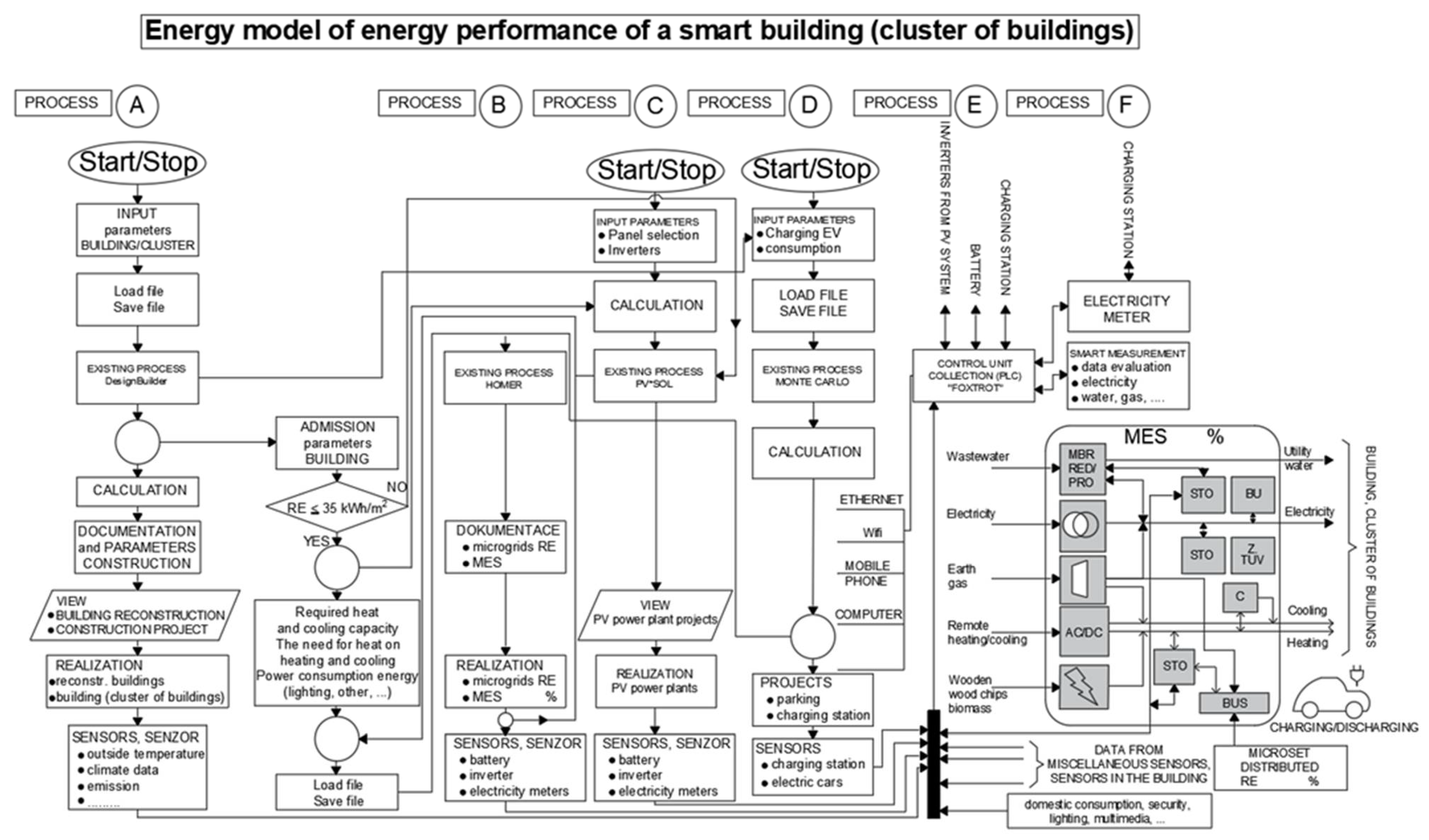
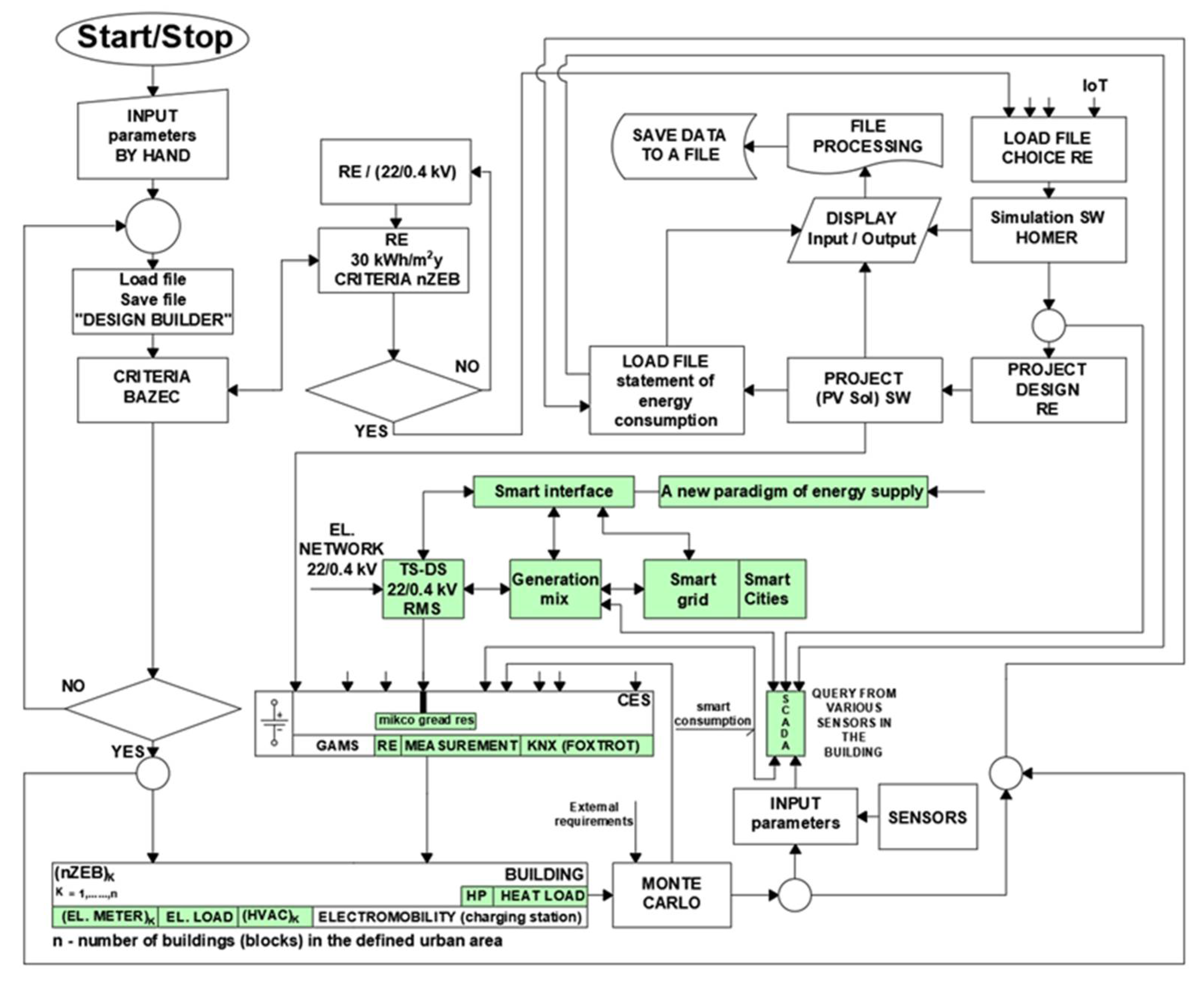
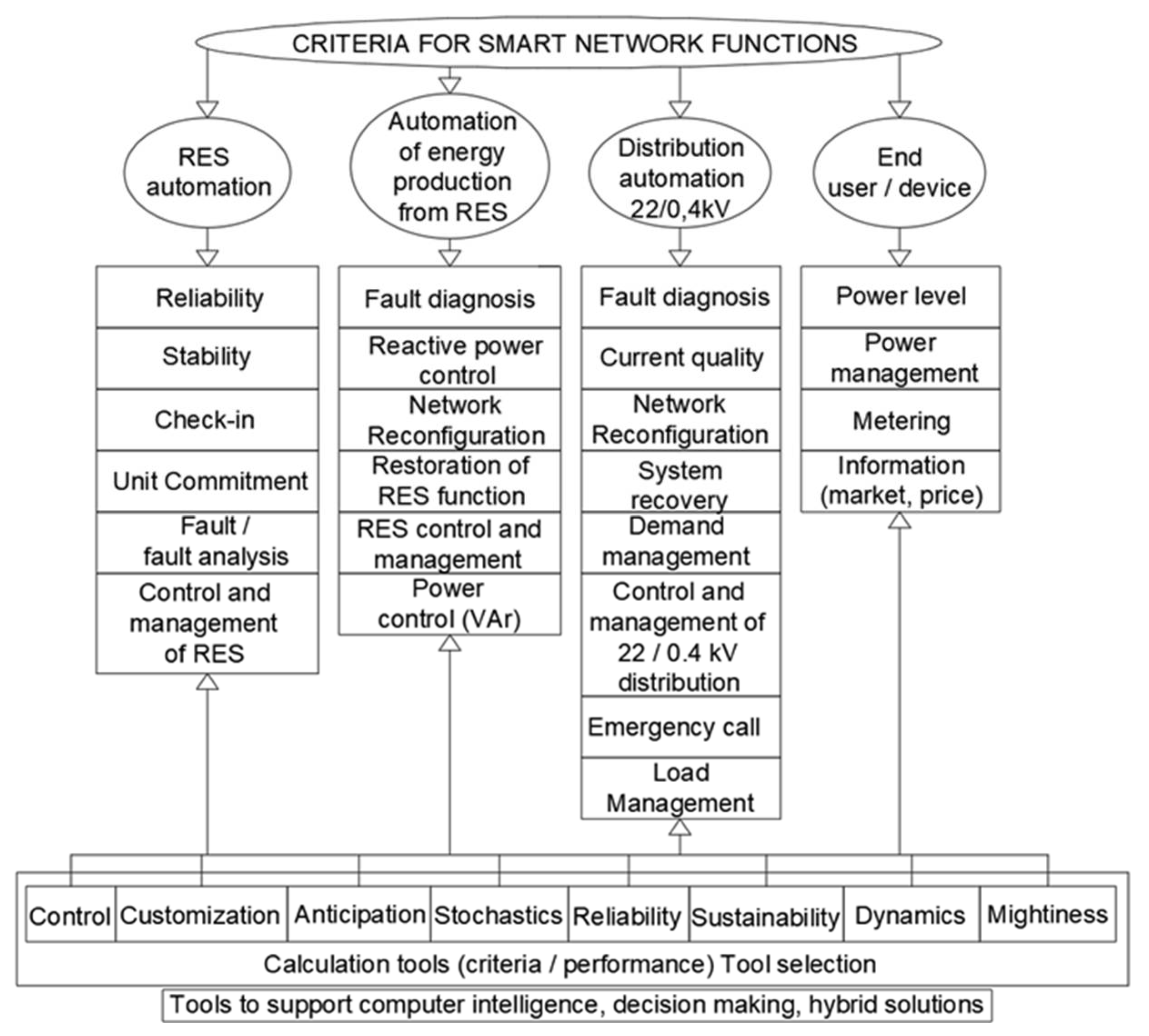
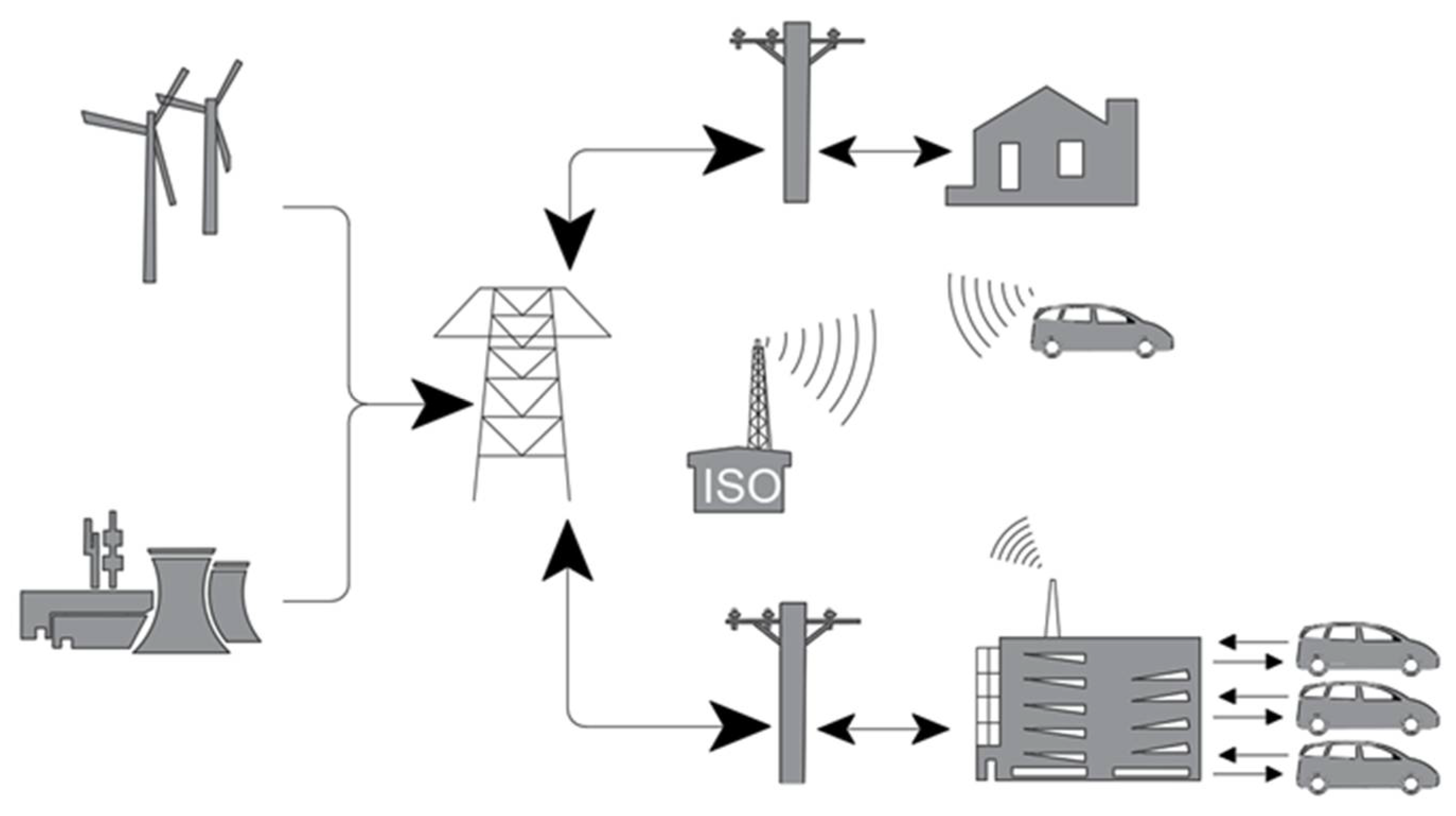
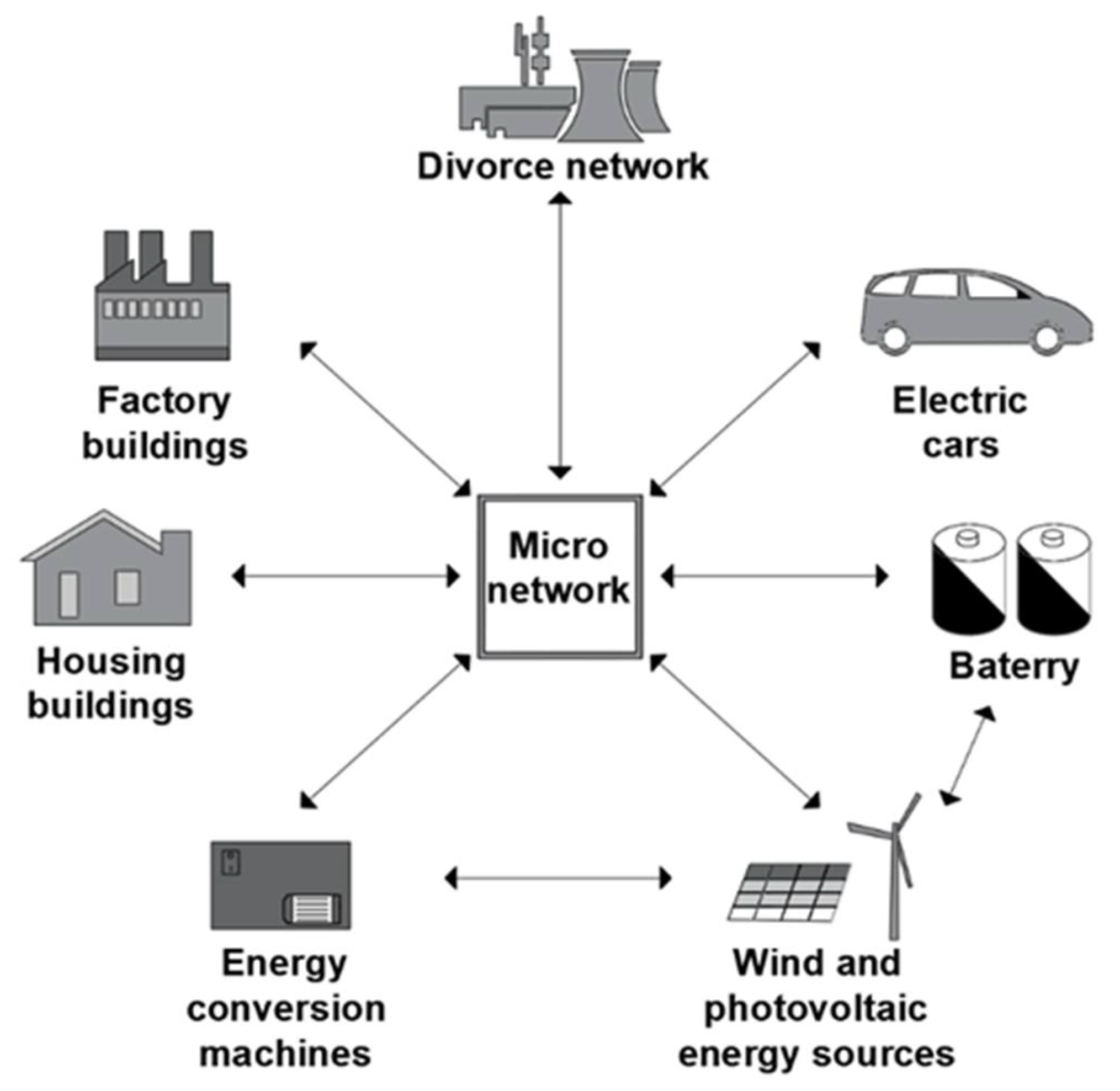
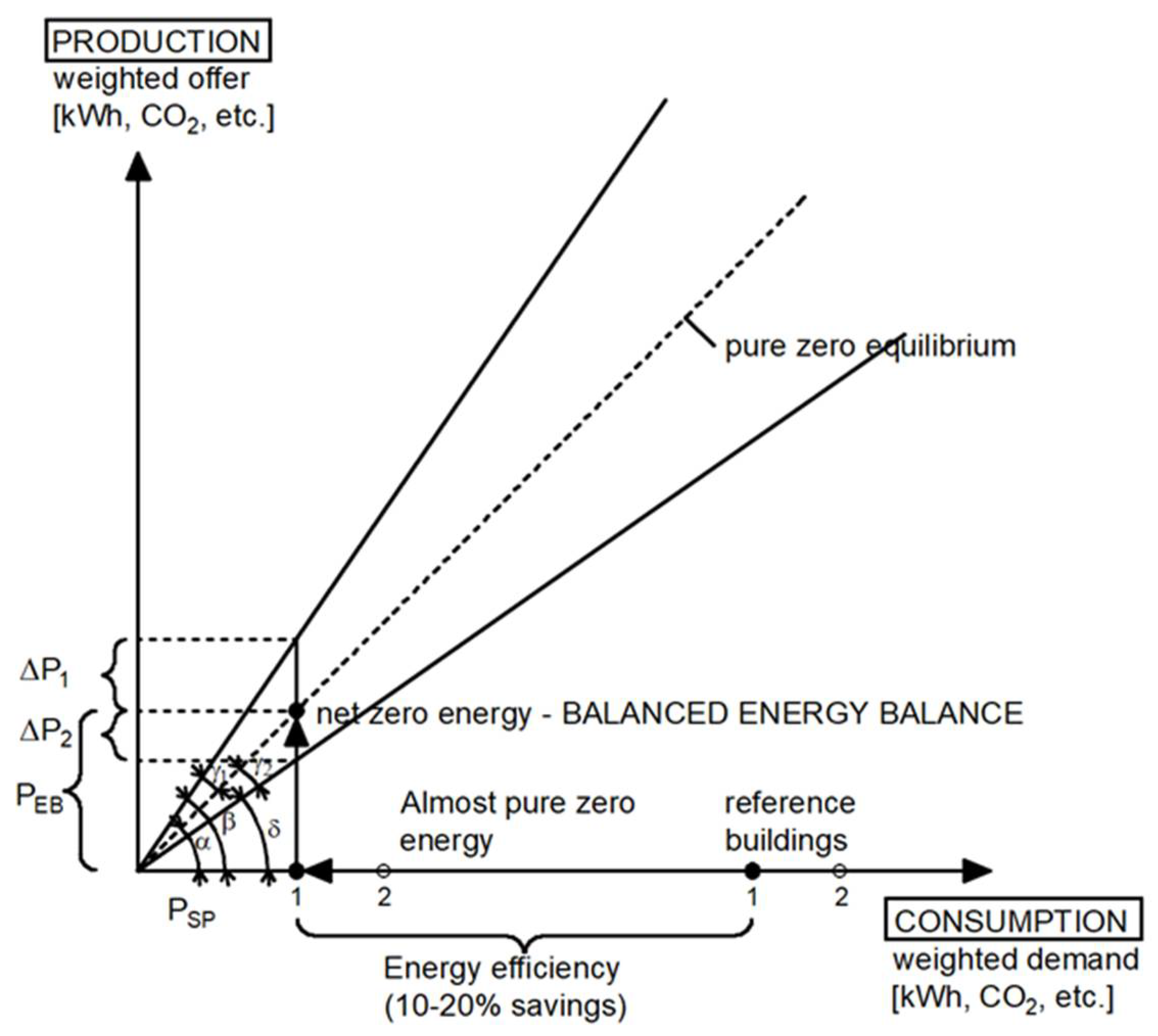




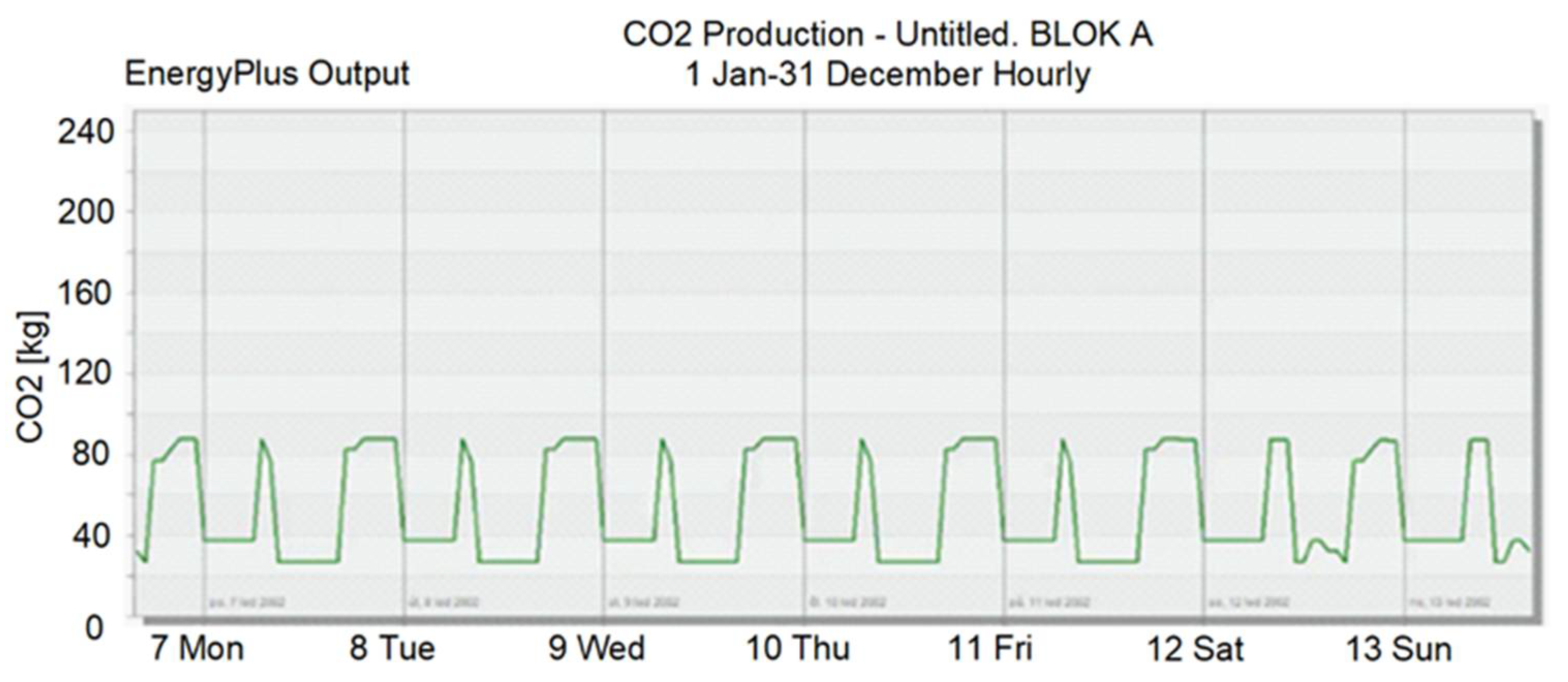
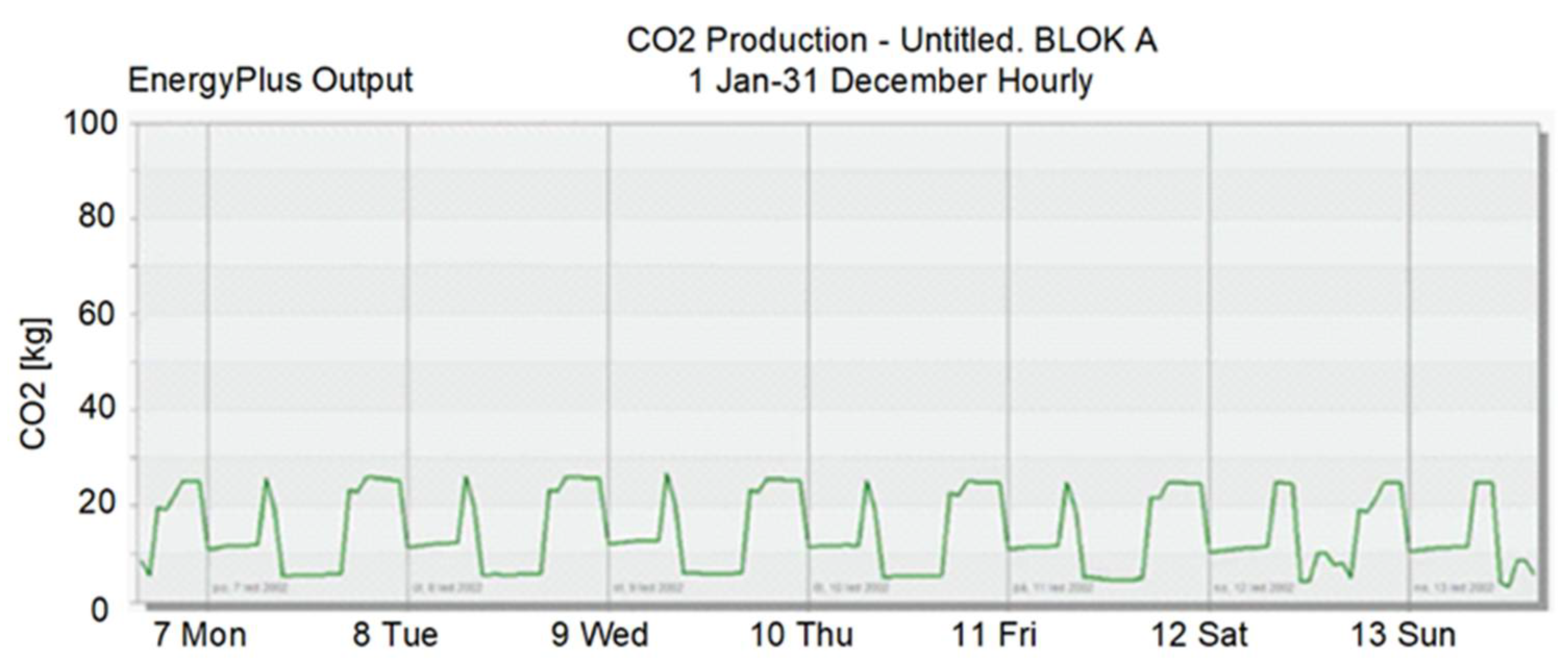
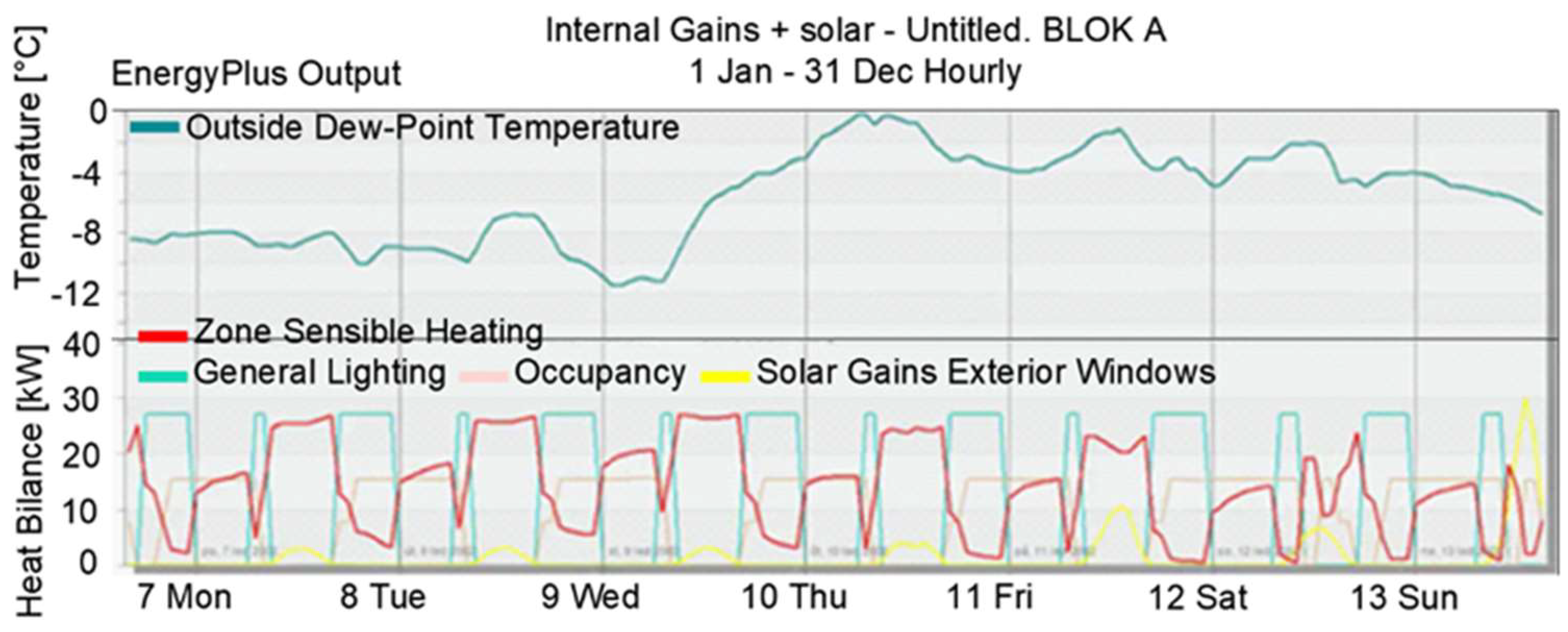

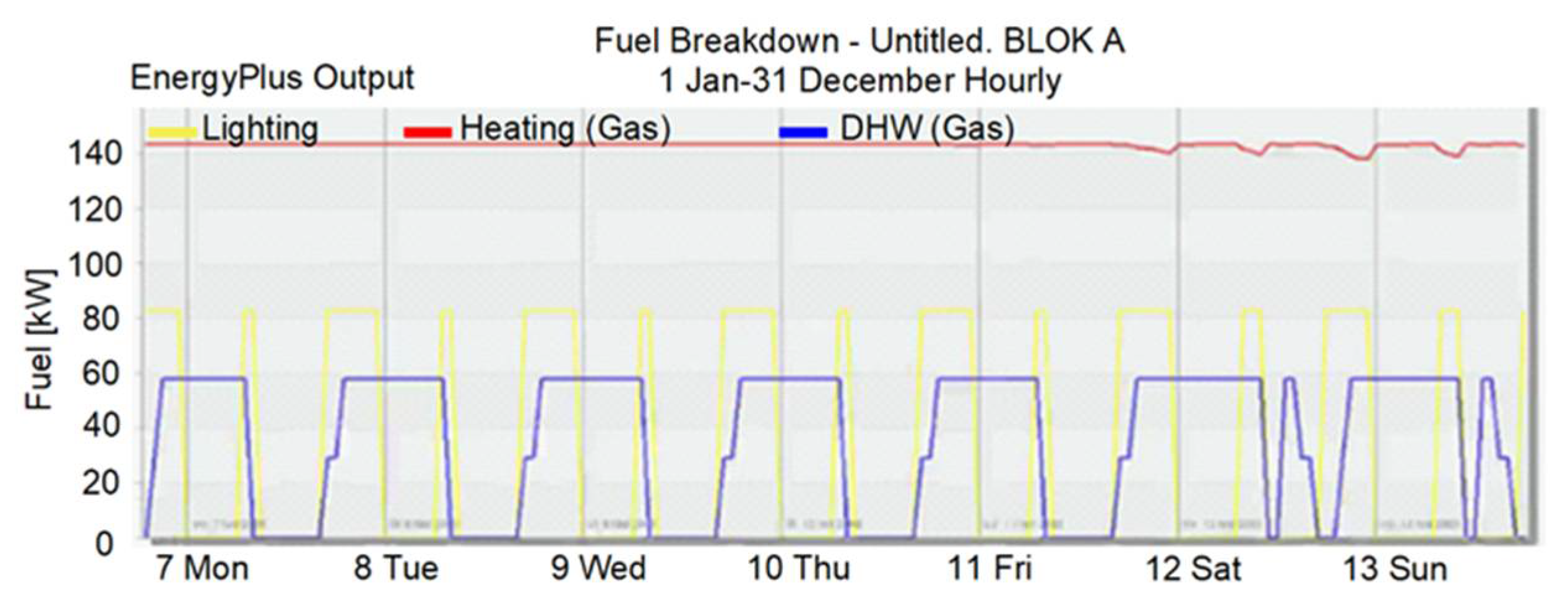
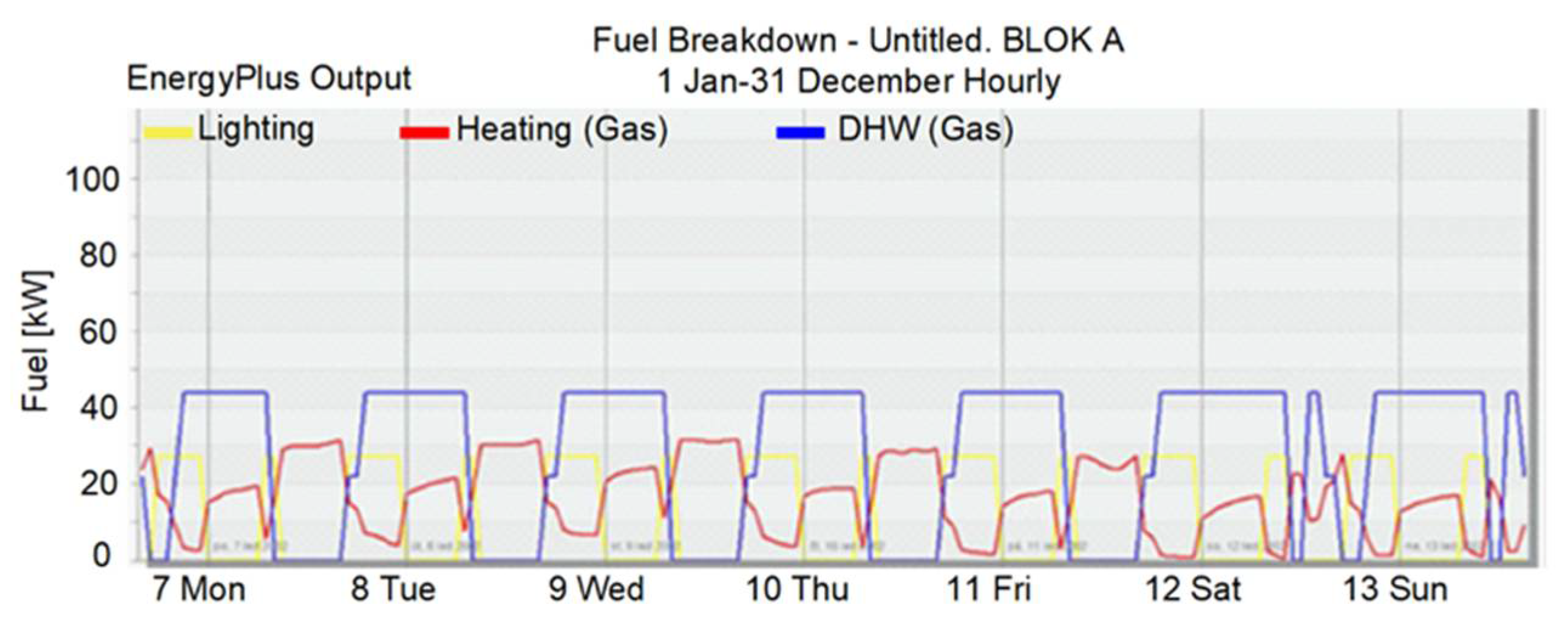

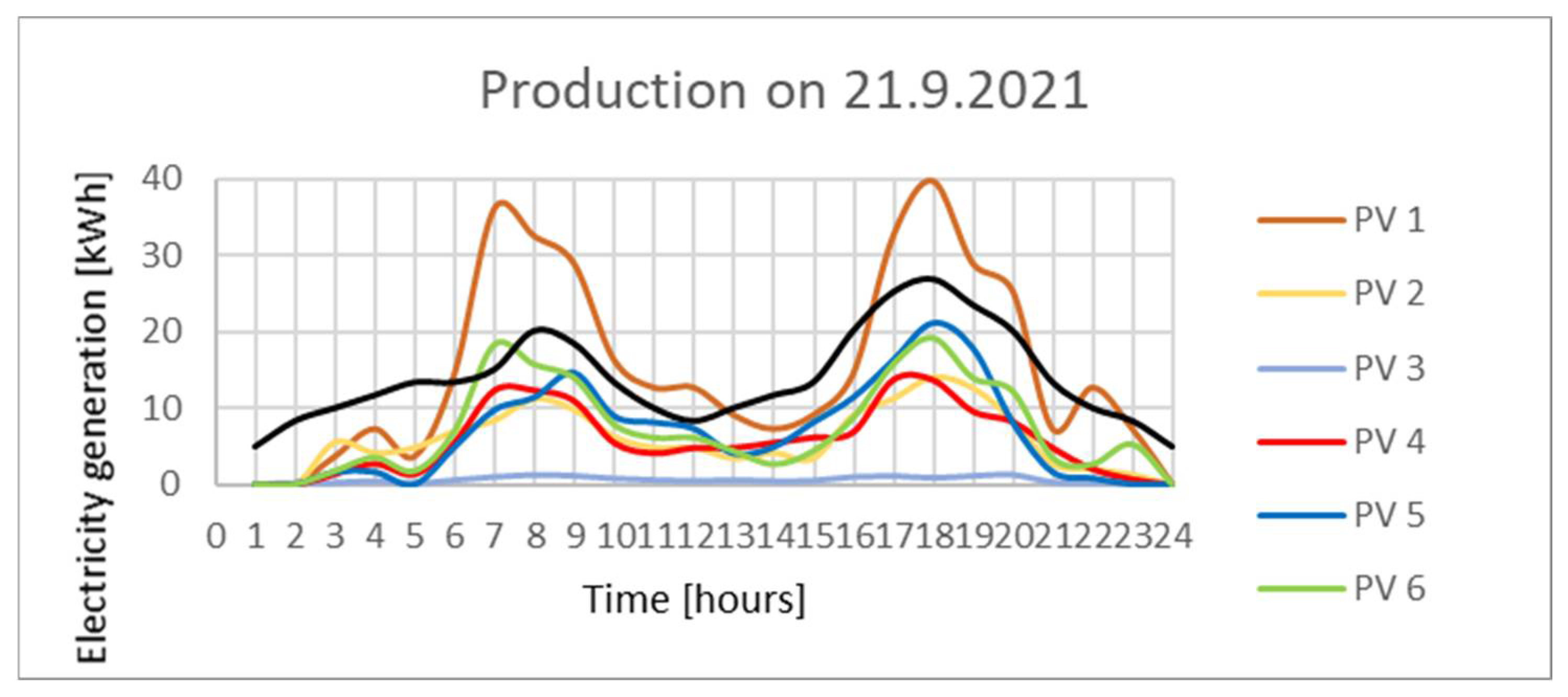
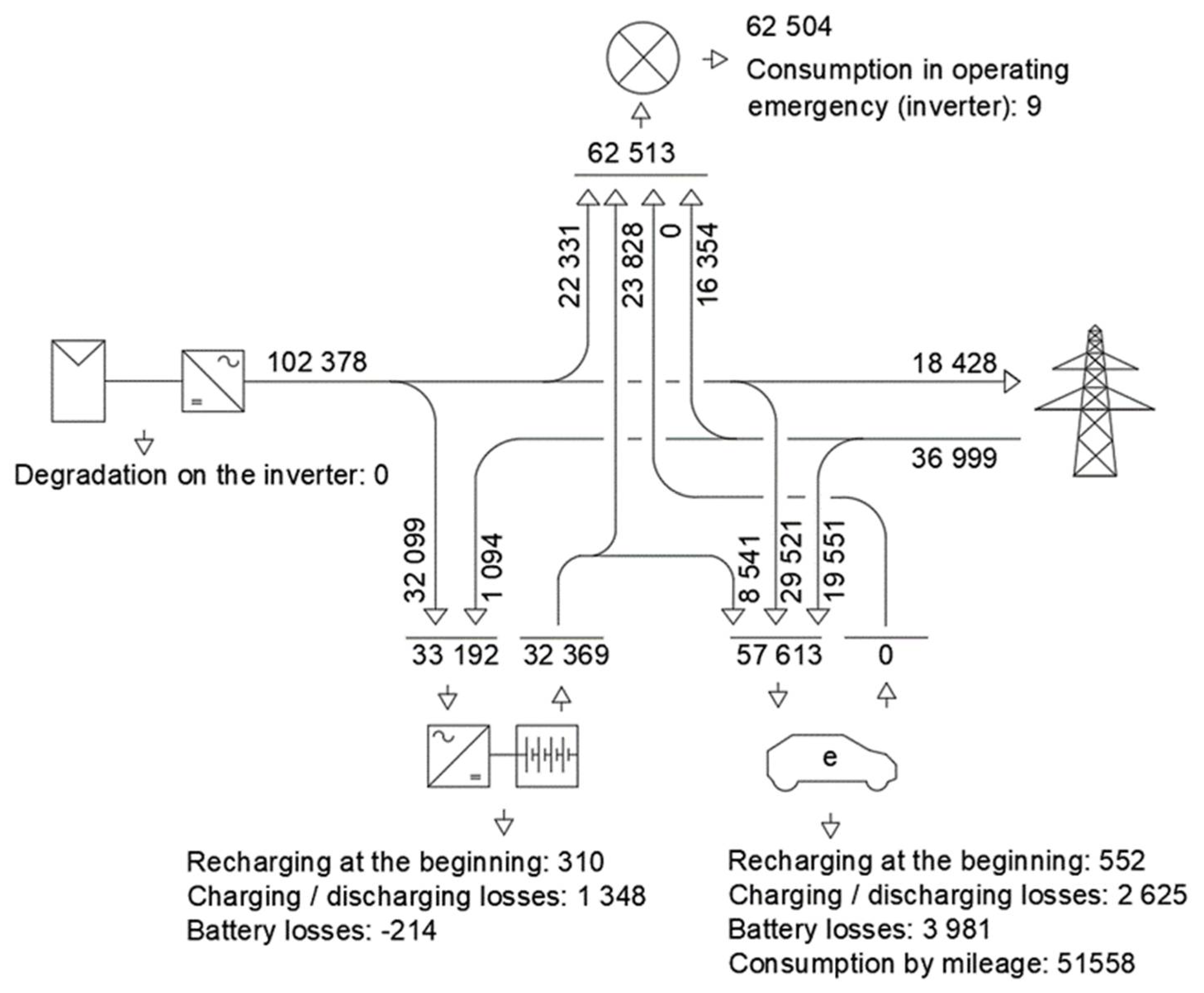




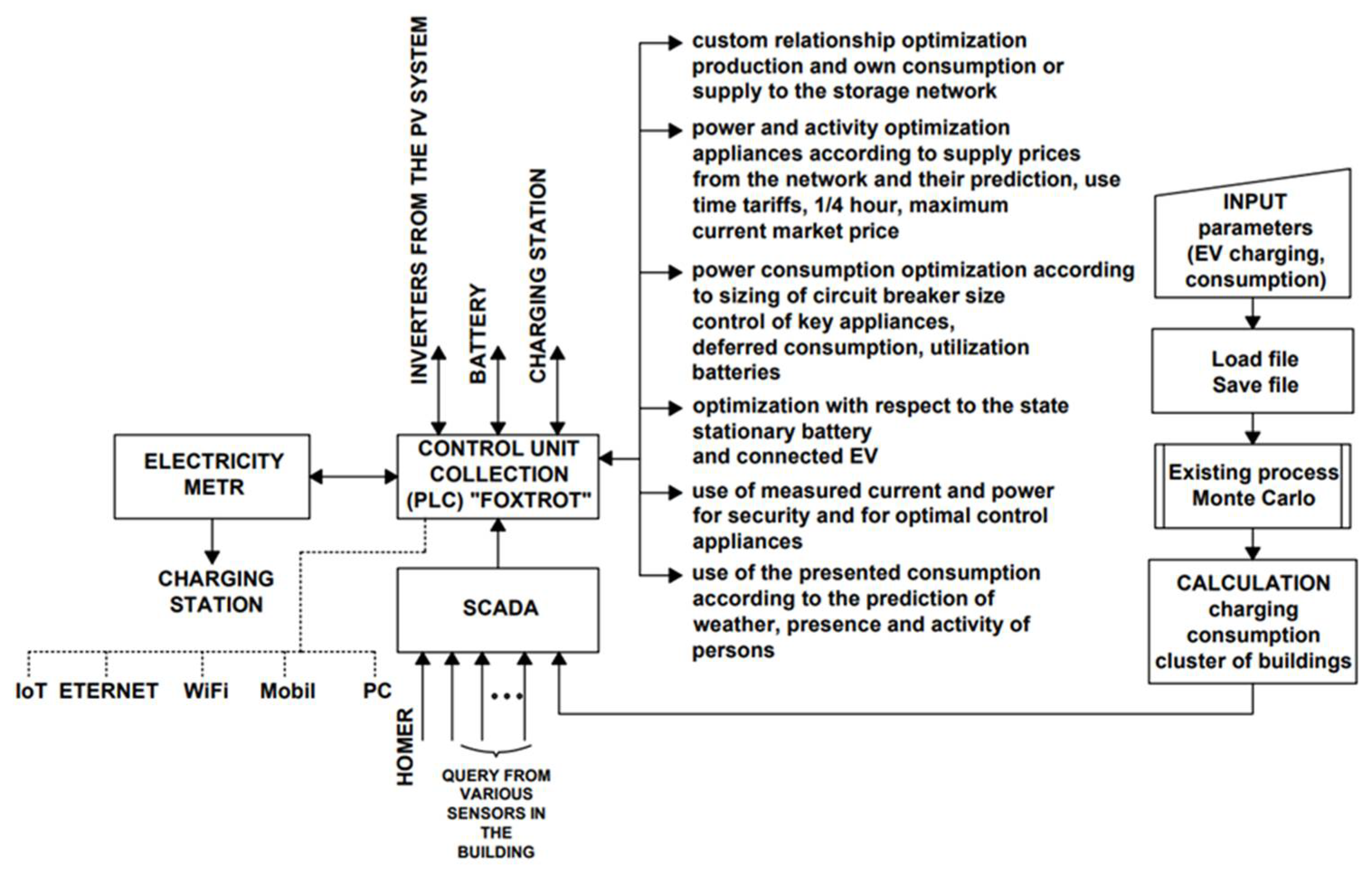
| Climatic Zone | Administrative Buildings | New Houses | ||||
|---|---|---|---|---|---|---|
| Net Primary Energy per Year (kWh/m2) | Primary Energy Consumption per Year (kWh/m2) | Coverage from RES per Year (kWh/m2) | Net Primary Energy per Year (kWh/m2) | Primary Energy Consumption per Year (kWh/m2) | Coverage from RES per Year (kWh/m2) | |
| Mediterranean | 20–30 | 80–90 | 60 | 0–15 | 50–65 | 50 |
| Oceanic | 40–50 | 85–100 | 45 | 15–30 | 50–65 | 35 |
| Continental | 40–55 | 85–100 | 45 | 20–40 | 50–70 | 30 |
| Nordic | 55–70 | 85–100 | 30 | 40–65 | 65–90 | 25 |
| Structure Description | Heat Transfer Coefficient (W/(m2·K)) | ||
|---|---|---|---|
| Required Values UN,20 | Recommended Values Urec,20 | Recommended Values for Passive Buildings Upas,20 | |
| Outer wall | 0.30 | Heavy: 0.25 Light: 0.20 | 0.18 to 0.12 |
| Flat and sloping roof with a slope up to 45° (inclusive) | 0.24 | 0.16 | 0.15 to 0.10 |
| Floor and wall of the heated space adjacent to the ground | 0.45 | 0.30 | 0.22 to 0.15 |
| Windows and doors in the external wall and steep roof, from the heated space to the outside environment | 1.5 | 1.2 | 0.8 to 0.6 |
| Question | Six Sigma Phase | Description |
|---|---|---|
| What is this about? | Defining e.g., CO2 reduction | Define the strategic issue to be addressed. e.g., Develop NZEB project documentation |
| Where is the process now? | Measurement e.g., Preparation of the Energy Performance of Buildings Certificate (EPBC) | Measure the current performance of the process to be improved. e.g., An EPBC will be prepared. |
| What are the causes? | Analysing e.g., Analysing software tools for RES application. The electricity consumption of buildings, transport, and parking is affected. Impact on CO2. It is also necessary to address the issue of energy consumption within the EV charging process. | Analyse the process in order to identify the root causes of poor performance. e.g., The RES will be designed, as set out in Decree No. 78/2013 Sb., i.e., it is a RES design without further context and links to the actual design system with the objective for the year 2030. The most appropriate method for optimization and design of the charging system is the MONTE CARLO method. |
| What can be done for this? | Improving Design of a new energy model of a building on the NZEB platform in the context of sustainable energy within the Smart City concept. | Improve the process by exploring and studying possible solutions to achieve a robust improved process. The entire NZEB design and engineering process can be improved by exploring and studying possible solutions to achieve a robust improved process. Design a new methodology for designing EPB in the sustainable energy process within the Smart City (area) concept. This is to meet the key objective for 2030; see the description under the “Analysing” section. |
| How to maintain the achieved condition? | Managing Application of control systems for building automation. Energy savings in the range of 11 to 31%. | Standardize the improved process so that it can be managed and continuously improved to maintain its performance. This process is about standardising an improved EPB process so that it can be managed and continuously improved to maintain its performance in terms of sustainable energy. Building automation systems must be used to ensure this. |
| Infrastructure | Presence of RES | Simulation and Control | Time Step Simulation | |
|---|---|---|---|---|
| MESCOS | Electricity, heat | Yes | Yes (comprehensive) | Sec |
| CITYSIM | Heat | Yes | No | After hours |
| ENERGY PLUS | Heat | Yes | No | Minutes |
| ENERGY PLAN | Electricity–Heat-Transport | Yes | Yes (after simple) | After hours |
| HYBRID2 | Electricity | Yes | Yes (comprehensive) | 5 minutes |
| GRID-LAB | Electricity (detailed) | Yes | Yes (comprehensive) | Parts of seconds |
| RETSCREEN | Electricity (detailed) | Yes | Yes (simple) | After hours |
| RAPSIM | Electricity (detailed) | Yes | No | Minutes |
| DESIGN BUILDER | Electricity–heat | Yes | Yes | Minutes |
| MONTE CARLO | Electricity | Yes | Possible | Minutes |
| HOMER | Electricity | Yes | Yes | Minutes |
| Condition before Reconstruction (Annual Values) | CO2 Production (kg) |
|---|---|
| Block A | 287,893.1 |
| Block B | 201,294.4 |
| Block C | 53,153.55 |
| Block D | 140,085.30 |
| Block E | 186,972.30 |
| Block F | 315,807.10 |
| Total: | 1,185,205.75 |
| Condition after Reconstruction (Annual Values) | CO2 Production without PV (kg) | CO2 Production with PV 1 (kg) |
|---|---|---|
| Block A | 87,472.45 | 409.45 |
| Block B | 54,098.88 | 25,951.88 |
| Block C | 13,406.89 | 9015.89 |
| Block D | 41,359.04 | 10,339.04 |
| Block E | 47,204.16 | 8829.16 |
| Block F | 80,969.36 | 42,482.36 |
| Total: | 324,510.78 | 97,027.78 |
| Condition Before Reconstruction | Status | Condition after Reconstruction | Status | |
|---|---|---|---|---|
| Uwall | 1.1 | Not suitable | 0.21 | Satisfies |
| Ufloor | 1.03 | Not suitable | 0.26 | Satisfies |
| Uroof | 1.1 | Not suitable | 0.18 | Satisfies |
| Condition before Reconstruction (Annual Values) | Heat Demand for Heating (kWh) |
|---|---|
| Block A | 518,829.6 |
| Block B | 431,060.1 |
| Block C | 124,580.9 |
| Block D | 324,022.8 |
| Block E | 416,312.1 |
| Block F | 766,314.1 |
| Total | 2,581,119.6 |
| Condition after Reconstruction (Annual Values) | Heat Demand for Heating (kWh) |
|---|---|
| Block A | 2295.01 |
| Block B | 10,319.52 |
| Block C | 7407.81 |
| Block D | 6690.62 |
| Block E | 10,278.40 |
| Block F | 15,768.51 |
| Total | 72,559.87 |
| Condition before Reconstruction (Annual Values) | Electricity (kWh) | Heating (kWh) | Hot Water Preparation (kWh) |
|---|---|---|---|
| Block A | 164,585.2 | 609,859.2 | 315,617.0 |
| Block B | 122,803.2 | 506,729.8 | 198,661.1 |
| Block C | 38,476.8 | 146,461.6 | 28,767.39 |
| Block D | 91,296.0 | 381,097.4 | 135,167.5 |
| Block E | 128,563.2 | 489,506.9 | 124,050.3 |
| Block F | 183,859.2 | 901,178.3 | 244,249.3 |
| Condition before Reconstruction (Annual Values) | Electricity (kWh) | Heating (kWh) | Hot Water Preparation (kWh) |
|---|---|---|---|
| Block A | 62,503.9 | 24,459.7 | 239,962.9 |
| Block B | 38,572.8 | 9746.4 | 154,061.4 |
| Block C | 11,140.6 | 8388.2 | 27,097.4 |
| Block D | 27,545.9 | 6430.7 | 125,080.5 |
| Block E | 38,771.3 | 11,078.0 | 115,328.4 |
| Block F | 55,984.8 | 15,928.8 | 234,884.8 |
| Energy Carrier | Conversion Factor f (Primary Energy Factor from Non-Renewable Energy Sources) (kWh/kWh) |
|---|---|
| Natural gas | 1.0 |
| Electrical energy | 2.6 |
| Electricity-photovoltaic power plant | 0.2 |
| Item | Annual Energy Consumption (kWh) | Conversion Factor f (-) | Annual Primary Energy Consum (kWh) | |
|---|---|---|---|---|
| a | b | c = a · b | ||
| BLOCK A | Heating | 609,859.2 | 1.0 | 609,859.2 |
| Electrical energy | 164,585.2 | 2.6 | 427,921.5 | |
| Hot water preparation | 315,617.0 | 1.0 | 315,617.0 | |
| Total | 1,090,061.4 | – | 1,353,397.7 | |
| BLOCK B | Heating | 506,729.8 | 1.0 | 506,729.8 |
| Electrical energy | 122,803.2 | 2.6 | 319,288.3 | |
| Hot water preparation | 198,661.1 | 1.0 | 198,661.1 | |
| Total | 828,194.1 | – | 1,024,679.2 | |
| BLOCK C | Heating | 146,461.6 | 1.0 | 146,461.6 |
| Electrical energy | 38,476.8 | 2.6 | 100,039.7 | |
| Hot water preparation | 28, 767.4 | 1.0 | 28,767.4 | |
| Total | 213,705.8 | – | 275,268.7 | |
| BLOCK D | Heating | 381,097.4 | 1.0 | 381,097.4 |
| Electrical energy | 91,296.0 | 2.6 | 237,369.6 | |
| Hot water preparation | 135,167.5 | 1.0 | 135,167.5 | |
| Total | 607,560.9 | – | 753,634.5 | |
| BLOCK E | Heating | 489,506.9 | 1.0 | 489,506.9 |
| Electrical energy | 128,563.2 | 2.6 | 334,264.3 | |
| Hot water preparation | 124,050.3 | 1.0 | 124,050.3 | |
| Total | 742,120.4 | – | 947,821.5 | |
| BLOCK F | Heating | 901,178.3 | 1.0 | 901,178.3 |
| Electrical energy | 183,859.2 | 2.6 | 478,033.9 | |
| Hot water preparation | 244,249.3 | 1.0 | 244,249.3 | |
| Total | 1,329,286.8 | – | 1,623,461.5 |
| Item | Annual Energy Consumption (kWh) | Conversion Factor f (-) | Annual Primary Energy Consum (kWh) | |
|---|---|---|---|---|
| a | b | c = a · b | ||
| BLOCK A | Heating | 24,459.7 | 1.0 | 24,459.7 |
| Electrical energy | 16,354.0 | 2.6 | 42,520.4 | |
| Electricity produced by the power plant | 46,159.0 | 0.2 | 9231.8 | |
| Hot water preparation | 239,962.9 | 1.0 | 239,962.9 | |
| Total | 326,935.6 | – | 316,174.8 | |
| BLOCK B | Heating | 9746.4 | 1.0 | 9746.4 |
| Electrical energy | 17,717.0 | 2.6 | 46,064.2 | |
| Electricity produced by the power plant | 20,865.0 | 0.2 | 4173.0 | |
| Hot water preparation | 154,061.4 | 1.0 | 154,061.4 | |
| Total | 202,389.8 | – | 214,045.0 | |
| BLOCK C | Heating | 8388.2 | 1.0 | 8388.2 |
| Electrical energy | 7624.0 | 2.6 | 19,822.4 | |
| Electricity produced by the power plant | 3521.0 | 0.2 | 704.2 | |
| Hot water preparation | 27,097.4 | 1.0 | 27,097.4 | |
| Total | 46,630.6 | – | 56,012.2 | |
| BLOCK D | Heating | 6430.7 | 1.0 | 6430.7 |
| Electrical energy | 8526.0 | 2.6 | 22,167.6 | |
| Electricity produced by the power plant | 19,038.0 | 0.2 | 3807.6 | |
| Hot water preparation | 125,080.5 | 1.0 | 125,080.5 | |
| Total | 159,075.2 | – | 157,486.4 | |
| BLOCK E | Heating | 11,078.0 | 1.0 | 11,078.0 |
| Electrical energy | 15,777.0 | 2.6 | 41,020.2 | |
| Electricity produced by the power plant | 23,012.0 | 0.2 | 4602.4 | |
| Hot water preparation | 115,328.4 | 1.0 | 115,328.4 | |
| Total | 165,195.4 | – | 172,029.0 | |
| BLOCK F | Heating | 15,928.8 | 1.0 | 15,928.8 |
| Electrical energy | 27,392.0 | 2.6 | 71,219.2 | |
| Electricity produced by the power plant | 28,610.0 | 0.2 | 5722.0 | |
| Hot water preparation | 234,884.8 | 1.0 | 234,884.8 | |
| Total | 306,815.6 | – | 327,754.8 |
| BLOCK | Usable Area of the Block (m2) | Annual Primary Energy Consumption (kWh) | Primary Energy Consumption per Year (kWh/m2) | Required Primary Energy Consumption per Year (kWh/m2) | Status | Energy Produced Renewable Resource (kWh) | Coverage of RE per Year (kWh/m2) | Required Coverage from RE per Year (kWh/m2) | Status |
|---|---|---|---|---|---|---|---|---|---|
| - | a | b | c = b/a | d | e = d/a | ||||
| A | 4577.6 | 1353, 397.7 | 295.7 | 50–65 | Does not meet | No RES | No RES | 35 | Does not meet |
| B | 3411.2 | 1024,679.2 | 300.4 | 50–65 | Does not meet | No RES | No RES | 35 | Does not meet |
| C | 1068.8 | 275,268.7 | 257.5 | 50–65 | Does not meet | No RES | No RES | 35 | Does not meet |
| D | 2536.0 | 753,634.5 | 297.2 | 50–65 | Does not meet | No RES | No RES | 35 | Does not meet |
| E | 3571.2 | 947,821.5 | 265.4 | 50–65 | Does not meet | No RES | No RES | 35 | Does not meet |
| F | 5107.2 | 1623,461.5 | 317.9 | 50–65 | Does not meet | No RES | No RES | 35 | Does not meet |
| BLOCK | Usable Area of the Block (m2) | Annual Primary Energy Consumption (kWh) | Primary Energy Consumption per year (kWh/m2) | Required Primary Energy Consumption per year (kWh/m2) | Status | Energy Produced Renewable Resource (kWh) | Coverage of RE per year (kWh/m2) | Required Coverage from RE per year (kWh/m2) | Status |
|---|---|---|---|---|---|---|---|---|---|
| A | 4577.6 | 316,174.8 | 69.1 | 50–65 | Does not meet | 102,378 | 22.4 | 35 | Does not meet |
| B | 3411.2 | 214,045.0 | 62.7 | 50–65 | Satisfies | 33,262 | 9.8 | 35 | Does not meet |
| C | 1068.8 | 56,012.2 | 52.4 | 50–65 | Satisfies | 5207 | 4.9 | 35 | Does not meet |
| D | 2536.0 | 157,486.4 | 62.1 | 50–65 | Satisfies | 36,483 | 14.4 | 35 | Does not meet |
| E | 3571.2 | 172,029.0 | 48.2 | 50–65 | Satisfies | 45,175 | 12.6 | 35 | Does not meet |
| F | 5107.2 | 327,754.8 | 64.2 | 50–65 | Satisfies | 45,440 | 8.9 | 35 | Does not meet |
| Parking Sign Figure 8 | Number of Parking Spaces | Number of Charging Stations |
|---|---|---|
| P1 | 26 | 3 |
| P2 | 20 | 2 |
| P3 | 25 | 3 |
| P4 | 5 | 1 |
| P5 | 44 | 5 |
| Total | 120 | 14 |
| Designation of Residential Zones | Allocation of Charging Stations |
|---|---|
| A | DS10, DS11, DS12, DS13, DS14 |
| B | DS5, DS9 |
| C | DS4 |
| D | DS3 |
| E | DS1, DS2 |
| F | DS6, DS7, DS8 |
| Designation of Residential Zones | Simulated Consumption of Charging Stations (kWh) | Theoretical Consumption of Charging Stations (kWh) | Savings |
|---|---|---|---|
| A | 57,613 | 164,250 | 64.92% |
| B | 22,664 | 65,700 | 65.50% |
| C | 11,141 | 32,850 | 66.09% |
| D | 11,865 | 32,850 | 63.88% |
| E | 23,581 | 65,700 | 64.11% |
| F | 33,984 | 98,550 | 65.52% |
| Total | 160,848 | 459,900 | 65.03% |
| PV | Energy Produced | Module Area | Orientation | Tilt | Number of Modules | Installed Power | Own Household Consumption | Battery Power Supply | EV Charging | Network Overflow | Reduction of CO2 Emissions | Share of own Consumption | Specific Annual Revenue | ||
|---|---|---|---|---|---|---|---|---|---|---|---|---|---|---|---|
| Covered PV | Covered with Battery | Covered PV | Covered with Battery | ||||||||||||
| - | [kWh] | [m2] | - | [°] | [pcs] | [kWp] | [kWh] | [kWh] | [kWh] | [kWh] | [kWh] | [kWh] | [kg/year] | [%] | [kWh/kWp] |
| PV 1 | 102,378 | 477.2 | SW | 34–37 | 216 | 98.28 | 22,331 | 23,828 | 32,099 | 29,521 | 8541 | 18,428 | 87,063 | 82.0 | 1041.61 |
| PV 2 | 33,262 | 161.2 | S | 10 | 73 | 33.21 | 12,370 | 8495 | 12,271 | 7539 | 3525 | 1082 | 28,147 | 96.7 | 1001.15 |
| PV 3 | 5207 | 26.5 | S | 10 | 12 | 5.46 | 2978 | 543 | 832 | 962 | 196 | 434 | 4391 | 91.7 | 952.71 |
| PV 4 | 36,483 | 201.0 | S, E, W | 29–36 | 91 | 41.41 | 10,109 | 8929 | 9745 | 7969 | 775 | 8660 | 31,020 | 76.3 | 880.71 |
| PV 5 | 45,175 | 269.5 | E, W | 10–40 | 122 | 55.51 | 13,326 | 9686 | 13,096 | 11,095 | 3254 | 7659 | 38,375 | 83.0 | 813.51 |
| PV 6 | 45,440 | 225.3 | SW | 10 | 102 | 46.41 | 17,521 | 11,089 | 15,839 | 10,518 | 4482 | 1562 | 38,487 | 96.6 | 978.72 |
| BLOCK | Power Supplied by the Distribution Network | Own Household Consumtion from the Distribution Network | Power Supply to the Battery from dis. Networks | EV Charging from the Distribution Network |
|---|---|---|---|---|
| - | [kWh] | [kWh] | [kWh] | [kWh] |
| A | 36,999 | 16,354 | 1094 | 19,551 |
| B | 29,454 | 17,717 | 137 | 11,600 |
| C | 17,607 | 7624 | 0 | 9982 |
| D | 11,866 | 8526 | 219 | 3121 |
| E | 25,252 | 15,777 | 243 | 9232 |
| F | 46,623 | 27,392 | 247 | 18,985 |
| Month | Energy Purchased (kWh) | Energy Sold (kWh) | Net Energy Purchased (kWh) | Peak Demand (kW) | Energy Charge $ | Demand Charge $ |
|---|---|---|---|---|---|---|
| January | 294 | 182 | 112 | 2 | $20.11 | $0 |
| February | 223 | 249 | −26 | 2 | $1.82 | $0 |
| March | 217 | 301 | −85 | 2 | $5.92 | $0 |
| April | 166 | 353 | −187 | 2 | $13.10 | $0 |
| May | 130 | 407 | −277 | 1 | $19.42 | $0 |
| June | 112 | 368 | −256 | 1 | $17.93 | $0 |
| July | 110 | 407 | −297 | 1 | $20.79 | $0 |
| August | 131 | 428 | −298 | 1 | $20.85 | $0 |
| September | 163 | 318 | −154 | 2 | $10.80 | $0 |
| Quantity | Value | Units |
|---|---|---|
| Carbon Dioxide | 1.462 | kg/yr |
| Carbon Monoxide | 0 | kg/yr |
| Unburned Hydrocarbons | 0 | kg/yr |
| Particulate Matter | 0 | kg/yr |
| Sulfur Dioxide | 6.34 | kg/yr |
| Nitrogen Oxides | 3.10 | kg/yr |
| CO2 Production (kg) | Existing State of the Solution in the Application of EPB (DesignBuilder) (kg) | Tons of CO2 | CO2 Reduction according to EPBD3 by 2030 Requirement (40%) | CO2 Reduction According to EPBD3 + Summit ER December 2020. Implementation by 2030 Requirement (55%) | Existing State/after Reconstruction (%) | Met/Not Met |
|---|---|---|---|---|---|---|
| Total production before reconstruction | 1,193,205.75 | 1193.2 | 100 | 100 | 0 | Not met |
| Total production after reconstruction without PVE | 324,510.78 | 324.5 | 72 | 72 | 72 | Met |
| Total production after reconstruction with PVE | 97,027.78 | 97.027 | 92 | 92 | 92 | Met |
| Block | Electricity (Before Reconstruction) (kW) | Electricity (Before Reconstruction) (kW) | CO2 Reduction (%) | Heating (Before Reconstruction) (kW) | Heating (Before Reconstruction) (kW) | CO2 Reduction (%) | Met/Not Met Requirement—Decrease by 55% |
|---|---|---|---|---|---|---|---|
| A | 164,585.2 | 62,503.9 | 62.1 | 609,859.2 | 24,459.7 | 95.9 | Met |
| B | 122,803.2 | 38,572.8 | 68.5 | 506,729.8 | 9746.4 | 98.0 | Met |
| C | 38,476.8 | 11,140.6 | 71.0 | 146,461.6 | 8388.2 | 94.2 | Met |
| D | 91,296.0 | 27,545.9 | 69.8 | 381,097.4 | 6430.7 | 98.3 | Met |
| E | 128,563.2 | 38,771.3 | 69.8 | 489,506.9 | 11,078.0 | 97.7 | Met |
| F | 183,859.2 | 55,984.8 | 69.5 | 901,178.3 | 15,928.8 | 98.2 | Met |
| TOTAL | 729,583.6 | 234,519.3 | 67.8 | 3,034,833.2 | 76,031.8 | 97.4 | Met |
| Block | Electricity (Before Reconstruction) (kW) | Simulated Electricity Consumption from Charging Stations (kWh) | Electricity (after Reconstruction) (kW) | Total Electricity after Reconstruction Including Charging Stations | CO2 Reduction (%) | Met/Not Met Requirement 55% |
|---|---|---|---|---|---|---|
| A | 164,585.2 | 57,613 | 63,503.9 | 121,116.9 | 26.4 | Not met |
| B | 122,803.2 | 22,664 | 38,572.8 | 61,236.8 | 50.1 | Not met |
| C | 38,476.8 | 11,141 | 11,140.6 | 22,281.6 | 43.0 | Not met |
| D | 91,296.0 | 11,865 | 27,545.9 | 39,410.9 | 56.8 | Not met |
| E | 128,563.2 | 23,581 | 38,771.3 | 62,352.3 | 51.5 | Not met |
| F | 183,859.2 | 33,984 | 55,984.8 | 89,968.8 | 51.0 | Not met |
| TOTAL | 729,583.6 | 160,848 | 234,519.3 | 396,367.3 | 45.6 | Not met |
| Total Consumption of Electric Energy Before Reconstruction (kWh) | Total Consumption of Electric Energy After Reconstruction (kWh) | Decrease (%) | Status |
| 729,583.6 | 234,519.3 | 67.9% | Requirement met |
| Total consumption for heating before reconstruction (kWh) | Total consumption for heating after reconstruction (kWh) | Decrease (%) | Status |
| 3,034,833.,2 | 76,031.8 | 97.5% | Requirement met |
| Total consumption for hot water preparation before reconstruction (kWh) | Total consumption for hot water preparation after reconstruction (kWh) | Decrease (%) | Status |
| 1,046,512.6 | 896,415.4 | 14.3% | Requirement not met |
| Annual Primary energy Consumption for the Condition After the Reconstruction (kWh) | Annual Energy Produced by Renewable Source for the Condition after the Reconstruction (kWh) | Increase (%) | Status |
|---|---|---|---|
| 1,243,502.2 | 267,945 | 21.5 % | Requirement not met |
Publisher’s Note: MDPI stays neutral with regard to jurisdictional claims in published maps and institutional affiliations. |
© 2022 by the author. Licensee MDPI, Basel, Switzerland. This article is an open access article distributed under the terms and conditions of the Creative Commons Attribution (CC BY) license (https://creativecommons.org/licenses/by/4.0/).
Share and Cite
Garlík, B. Energy Sustainability of a Cluster of Buildings with the Application of Smart Grids and the Decentralization of Renewable Energy Sources. Energies 2022, 15, 1649. https://doi.org/10.3390/en15051649
Garlík B. Energy Sustainability of a Cluster of Buildings with the Application of Smart Grids and the Decentralization of Renewable Energy Sources. Energies. 2022; 15(5):1649. https://doi.org/10.3390/en15051649
Chicago/Turabian StyleGarlík, Bohumír. 2022. "Energy Sustainability of a Cluster of Buildings with the Application of Smart Grids and the Decentralization of Renewable Energy Sources" Energies 15, no. 5: 1649. https://doi.org/10.3390/en15051649
APA StyleGarlík, B. (2022). Energy Sustainability of a Cluster of Buildings with the Application of Smart Grids and the Decentralization of Renewable Energy Sources. Energies, 15(5), 1649. https://doi.org/10.3390/en15051649






